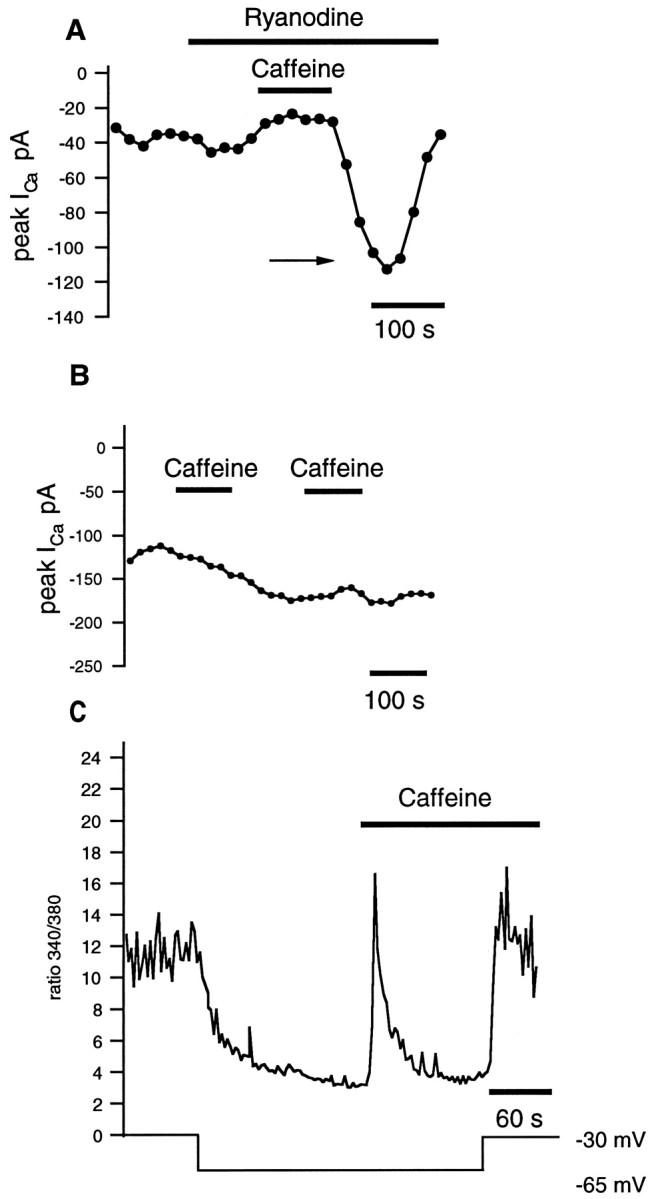Fig. 9.

Ryanodine and BAPTA reduce the effectiveness of caffeine on ICa. The rods were held at −70 mV and periodically (0.02 Hz) depolarized with a voltage ramp to +50 mV. The peak of ICa is plotted inA and B. A, Ryanodine (20 μm) suppressed the caffeine-mediated decrease inICa. B, This rod was dialyzed with 10 mm BAPTA in the patch pipette. Repetitive applications of caffeine did not reduce peakICa under these conditions.C, [Ca2+]i was monitored in a rod held under voltage clamp with a perforated patch electrode. The switch in potential from −30 to −65 mV reduced [Ca2+]i. Caffeine evoked a transient increase in [Ca2+]i. Switching the membrane potential back to −30 mV increased [Ca2+]i, indicating that the voltage-dependent channels were not closed by caffeine.
